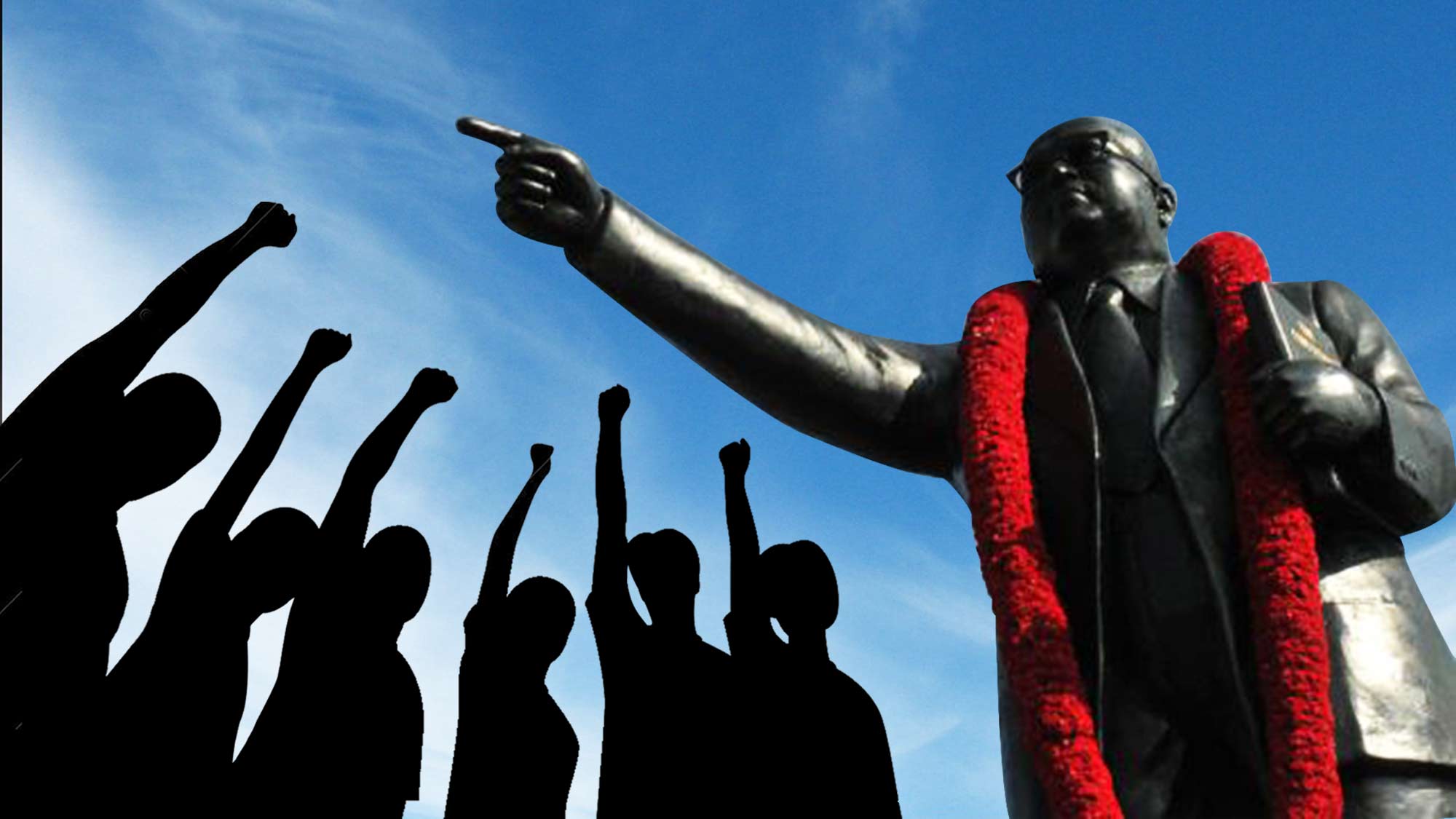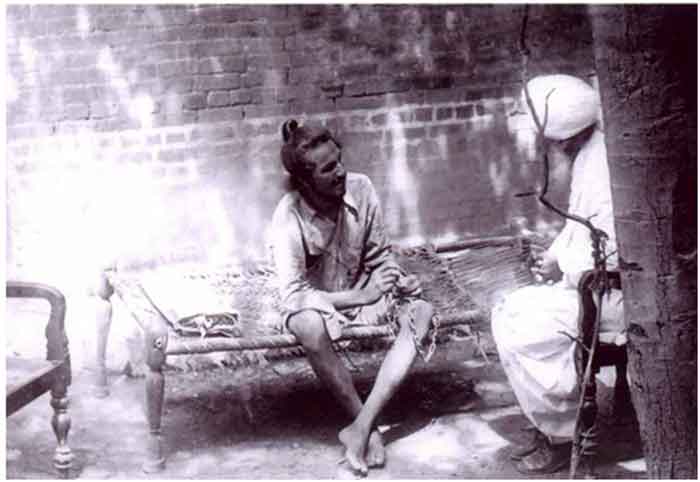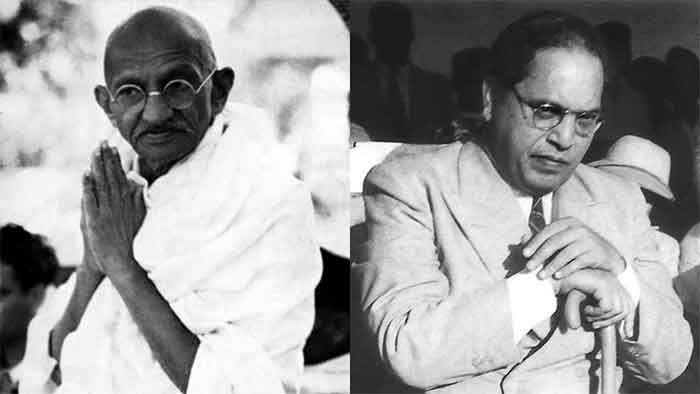
Dr. Ambedkar is considered the father of Dalit politics. He raised the demand for political rights to the Dalits in the Round Table Conferences and despite Gandhiji’s strong opposition, the Dalits got the status of a minority class and political rights apart from the Hindus, which were announced in the form of Communal Award. In this, Dalits got the right of separate electorates to choose their own representatives like other minorities like Sikhs and Muslims. Gandhiji opposed it by fasting till death by calling it a conspiracy to divide Hindu society and in the end Dr. Ambedkar had to sign Poona to save Gandhiji’s life. Due to this, instead of separate electorates, the Dalits got the facility of reserved seats in the legislature, reservation in government jobs and local bodies and special incentive for education, but the right of independent politics of the Dalits was snatched away.
Dr. Ambedkar formed the Independent Labour Party (Swatantra Mazdoor Party) and participated in the Bombay Presidency in the first election of 1937. His main emphasis in this election was on the issues of the working class. In this they won 15 seats including 3 general seats. After this he formed the All India Scheduled Castes Federation in 1942, whose membership was limited to Dalits only. With this, he contested elections in 1946 and 1952 but he did not get any special success. Finally, on October 14, 1956, he dissolved the Federation and founded the Republican Party of India (RPI). He also framed its constitution.
Now it remains to be seen what was the main vision of Babasaheb behind forming these parties. Let us first look at Babasaheb’s Swatantra Mazdoor Party. Dr. Ambedkar, in his statement, while explaining the reasons for the formation of the party and its work, had said- “Keeping in view that today is not the time to organize parties on the basis of sectarianism. Agreeing with the wishes of my friends, the name of the party and its program have been made huge so that political cooperation with other sections of the people can be possible. The main focus of the party will remain only 15 members of the Dalit castes, but people from other classes will also be able to join the party. The politics of this party was not casteist but class and issue based and mainly Dalits were at its centre.
If we look at the purpose and agenda of the All India Scheduled Castes Federation established by Babasaheb in 1942, it is found that Dr. Ambedkar had talked about establishing it as a third party to strike a balance between the ruling Congress and the socialist parties. Its membership was limited to the Depressed Classes only as it was necessary at that time to project the interests of the Depressed Classes.
Babasaheb formed the Republican Party of India (RPI) on October 14, 1956, whose main objective was to create a party that would be according to the promises made in the constitution and its objective was to fulfil them. He did not want to make it a party of untouchables only because a party formed in the name of one caste or class cannot get power. It can only become a pressure group. The main objectives behind the establishment of the RPI were: (1) To remove inequalities from the social system so that no privileged and deprived sections remain, (2) There should be a two-party system: one is the opposite party in power, (3) Equality before the law and there should be same law for all, (4) establishment of moral values in the society, (5) equal treatment to minority people, (6) sense of humanity which has been lacking in Indian society.
The main goal and objective of the party in the preamble of the party’s constitution was to achieve “Justice, Liberty, Equality and Fraternity”. The program of the party was very wide. Babasaheb’s objective behind the establishment of the party was that minority people, poor Muslims, poor Christians, poor and lower caste Sikhs and untouchables of weaker sections, people of backward castes, people of primitive castes, end of exploitation, seeking justice and progress. May all the people of India unite under one flag and stand against the capitalists and defend the Constitution and their rights.” – (Dalit Politics and Organization – Bhagwan Das)
It is clear from the above description that the objective of the political parties founded by Babasaheb was to create a multi-class party which could include Dalits, Backward, Muslims, Workers and Peasants. The agenda of the party was also made on the issues of these sections. The agenda of his parties was not casteist at all.
Now if we look at the current Dalit politics, then politics in the name of Bahujan comes to the fore. Its main father is Kanshi Ram. Kanshi Ram’s concept of Bahujan was from an alliance of Dalit, Muslim and other backward castes whom he considered to be 85% of the total population of India and the remaining 15% as upper castes. Hence his Bahujan politics is also known as 15 vs 85. His main agenda was to snatch political power from 15% of the upper castes. This formula sounds great but in practice it is not. The leadership in Kanshi Ram’s Bahujan politics was in the hands of the elite people of Dalits, Backward and Muslims. They used to get tickets on the basis of access/money and by winning they became ministers, MLAs and MPs. When the government was formed, it was they who used to take maximum advantage of it. Common Dalits, OBCs and Muslims were only the voters who voted vigorously in the hope that their problems would be resolved if the government was formed. But even after the formation of the BSP government four times, there was no improvement in their material conditions.
The main objective of Bahujan politics was to either capture or share political power. Its policies or agenda were not to replace the policies or agenda of the politics of the present exploiting class. Although Kanshi Ram had given the slogan of change of system, but when he came to power, he did not do anything for it. In fact, he had no alternative policies or agenda of his own which would uplift the common man (Dalit, Backward or Minority or others). The pivot of Bahujan politics was the section of the Depressed Classes who entered government jobs, whose biggest issue was reservation. Therefore, the main agenda of Bahujan politics was also reservation, promotion and good posting etc. Land allotment, employment, education, health and freedom from oppression were not in his agenda for the common Dalit. With Mayawati becoming the Chief Minister four times, they were emotionally appeased and there was some reduction in harassment too, but there was no major change in their condition. In fact, Bahujan politics had no capacity to fight Hindutva and pro-corporate politics and it was bound to decline.
In comparison to Kanshi Ram’s Bahujan politics, if Dr. Ambedkar’s politics is seen, then at its centre were poor Dalits, poor backward, poor Muslims, labourers and poor farmers. Babasaheb in his Agra speech had expressed deep concern over the landlessness of the Dalits and talked about fighting for getting them land. His aim was to unite these people under the banner of one party and fight for their constitutional rights by raising them against the capitalists and Brahminism. The main goal of Kanshi Ram was to get power by any means, for which he also took three-time support from the stauch anti-Dalit BJP, due to which Bahujan politics got confused and headed towards its downfall.
Babasaheb had created the Republican Party of India as a big platform in which apart from the Dalits, people from other sections could also participate. Through this, Babasaheb was creating an alternative politics in which the common man was at the centre. The main objective of the party was to create a party which is according to the promises made in the constitution and its objective is to fulfil them. Initially, when the party worked towards these objectives and agenda, it also got very good success in the elections of 1962 and 1967. It also led a huge land movement in 1964-65, which led to the allotment of land to the Dalits. Later this party got divided due to personal interest of some leaders, behind which Congress had a big hand. Congress broke its leaders with the lure of post and now it is divided into many pieces and is ineffective. Nowadays the leaders of Dalit parties also keep changing parties like this for personal gains.
At present, the main representative of Bahujan politics is considered to be the Bahujan Samaj Party. Apart from this, there is Ramdas Athawale’s RPI (A) in Maharashtra and Ram Vilas Paswan’s Bahujan Shakti Party in Bihar which has alliance with BJP. The agenda of all these parties is only to get power or share in power. They have no policy or agenda different from the ruling party BJP or Congress. That is why they cannot compete with BJP’s Hindutva and pro-corporate politics. In these parties, democracy is replaced by authoritarianism and the leadership is in the hands of one person. There is no interference of common man in this. That is why their leaders make alliances with anyone for personal gain, which does not benefit the common man. Dr. Ambedkar had said that political power is the key to all problems. He had further said that political power should be used for the development of the society but the conduct of leaders of Bahujan politics is completely opposite.
Therefore, in view of the above circumstances, in place of the present Bahujan politics, there is a need to develop a new politics of Dalits, backwards and minorities, whose policies and agenda are against the Hindutva and corporate politics of BJP and the attack of global capital. For this, alternative policies like making employment a fundamental right, making education universal, improving health services, stopping privatization, making agriculture profitable, allotting land to the landless, ending corporate monopoly, restoration of democracy, ending black laws and the need for secularism etc. Along with this, democratization of society in which the destruction of caste is prominent also needs to be implemented. The present politics of caste is the promotor of Hindutva itself. Therefore, instead of this, the politics of public issues should be adopted.
Keeping this need of Bahujan politics in view, we formed the All India People’s Front in 2013. In the leadership of this party, prominence has been given to Dalits, Adivasis, minorities, most backward and women. Its main goal is to give an embodiment of the concept of Begumpura of Sant Ravidas. This party is in favour of secularism and democracy. Our effort is to create a multi-class party so that intellectuals, social workers and parties of different ideologies can be included in it and with their help the attack of Hindutva and corporate backed BJP/RSS and the totalitarianism of financial capital can be stopped. It should be remembered that in the absence of alternative policies and agenda, the present Bahujan politics has failed miserably in this. Therefore, now Bahujan politics needs a new radical alternative.
Let us together honestly build a multi-class politics that can withstand the onslaught of BJP’s Hindutva, procorporate politics and global finance capital and can fulfil Dr. Ambedkar’s dream of establishing a casteless and classless society.
S R Darapuri, National President, All India People’s Front
















































